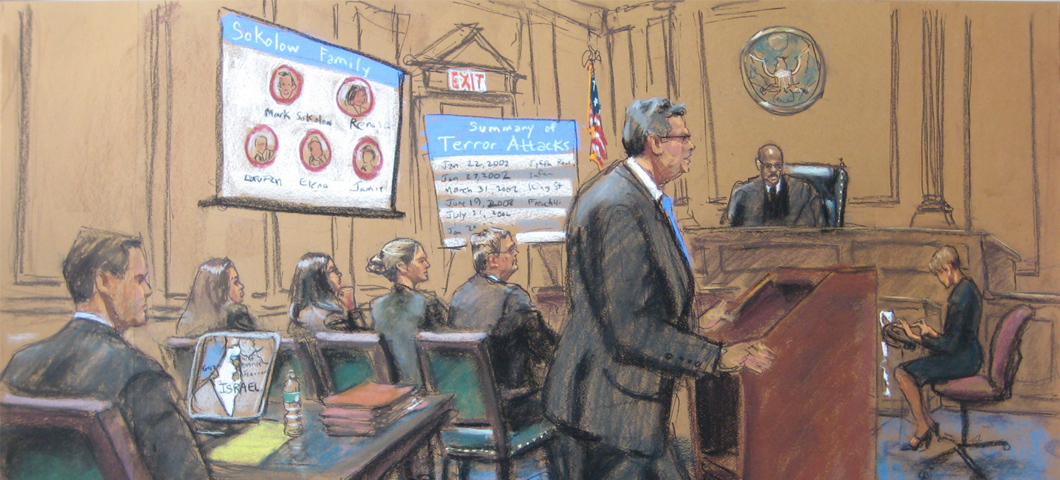Mesmerize the Jury: Crucial Aspects of a Powerful Trial Presentation
In the world of legal campaigning for, the capability to mesmerize a jury is vital to the result of a test (trial presentation). Essential components such as recognizing the audience, crafting an engaging narrative, and mastering spoken and non-verbal interaction are essential components of an effective discussion. The critical usage of aesthetic aids can dramatically enhance understanding and retention of crucial debates. As these variables intertwine, they create a natural strategy that not only notifies yet additionally engages jurors on multiple levels. What specific techniques can genuinely change a standard presentation into an unforgettable experience for the court?

Recognizing Your Target Market
Understanding your target market is an essential facet of effective test presentation. An effective discussion depends upon the capability to grasp the demographics, worths, and proneness of jurors. This comprehension educates just how debates are mounted, proof exists, and emotional charms are crafted, making certain that the message reverberates with the jurors on a personal level.
Study shows that jurors come from varied backgrounds and may have varying degrees of understanding relating to legal process. Furthermore, comprehending the jurors' potential predispositions and life experiences enables the test speaker to expect arguments and address issues proactively.
Effective trial presentation also involves observing jurors' responses during the proceedings. Being attuned to non-verbal signs can offer understanding right into their interaction and understanding, enabling real-time changes in approach. Inevitably, an extensive understanding of the target market not only boosts interaction but also develops relationship, boosting the chance of a positive outcome. Involving with jurors as individuals rather than a cumulative device is necessary in cultivating a solid link in the courtroom.

Crafting an Engaging Story
Crafting an engaging story is important in directing jurors with the intricacies of a situation. A well-structured narrative not just streamlines complex lawful principles yet also involves jurors on a psychological degree, making the info more relatable and memorable.
This message needs to reverberate with the jurors' worths and experiences, cultivating a link that transcends plain realities. This sequential method can aid jurors adhere to the progression of events, stressing cause and effect.
Integrating human components-- such as personal tales or anecdotes-- can even more boost the narrative's effect. These aspects evoke compassion, permitting jurors to visualize the effects of the instance on the real worlds. In addition, using a regular theme throughout the presentation strengthens the primary argument, making it much easier for jurors to maintain essential factors.
Ultimately, an engaging story changes a trial discussion from a mere recitation of realities into a convincing tale that captivates the court, urging them to deliberate with both factor and emotion.
Using Aesthetic Help
Including aesthetic help right into a trial discussion can significantly improve jurors' understanding and retention of information. Aesthetic materials such as charts, representations, photos, and videos can change complicated legal ideas and evidence right into conveniently digestible formats. By engaging numerous detects, these help enable jurors to envision the situation's vital aspects, making it less complicated for them to comply with along and understand complex information.
Additionally, well-designed visual help can stress crucial points and highlight partnerships in between different items of proof. Timelines can properly highlight the sequence of events, while annotated photos can make clear certain details pertinent to the case. This not just help in understanding yet also strengthens the narrative provided by the lawyer.
It is important, however, to guarantee that aesthetic aids are pertinent, clear, and expertly provided. Overly complex or messy visuals may bewilder jurors and diminish the message. When utilized sensibly, aesthetic aids offer to complement the oral debates and boost the overall influence of the trial presentation. Eventually, reliable visual interaction can be a powerful tool in convincing jurors and aiding them reach notified conclusions.
Mastering Verbal Communication
Reliable verbal communication is important in a test presentation, as it works as the main methods through which lawyers convey their disagreements and link with jurors. Grasping this ability involves clarity, persuasion, and interaction. Lawyers need to articulate their factors clearly and concisely, staying clear of lawful jargon that pop over to this web-site might puzzle jurors. Simpleness in language cultivates understanding and assists jurors understand intricate problems presented during the trial.
Moreover, tone and pacing substantially effect how messages are gotten. A certain tone conveys authority, while appropriate pacing allows jurors to absorb info without really feeling overwhelmed. Attorneys ought to also vary their singing inflections to highlight vital factors and keep jurors' rate of interest throughout the discussion.
Furthermore, the company of spoken arguments is important. Structuring the narrative practically and coherently helps jurors adhere to the attorney's logic, making it easier for them to preserve essential information. Utilizing influential techniques, such as narration, can additionally enhance the emotional vibration of the disagreements provided, therefore developing an extra profound link with jurors.
Inevitably, grasping spoken communication not just reinforces an attorney's situation yet also promotes depend on and connection with the jury, substantially boosting the chances of a desirable judgment.

Involving With Body Movement
Nonverbal communication plays an essential function in test presentations, typically communicating messages that words alone can not share. Body language, encompassing gestures, stance, face expressions, and eye get in touch with, significantly influences how jurors view the credibility and genuineness of the presenter. A positive stance, with shoulders back and an open stance, can impart count on, while closed-off body language may suggest defensiveness or unpredictability.

Faces must show the emotions connected with the instance, strengthening the story being presented. A sincere expression throughout an emotional moment can elicit empathy and reinforce the emotional charm. Eventually, grasping body movement is important for efficient test presentations, as it improves verbal communication and develops a compelling visibility that resonates with the jury.
Verdict
In final thought, astounding the court requires a critical method that includes understanding the audience, crafting a compelling story, using visual aids, mastering verbal communication, and engaging through body movement. Each element plays an important role in creating an effective trial discussion that reverberates with jurors on both psychological and intellectual levels (trial presentation). By integrating these elements efficiently, legal experts can considerably improve their this website capability to find persuade and affect jury decision-making